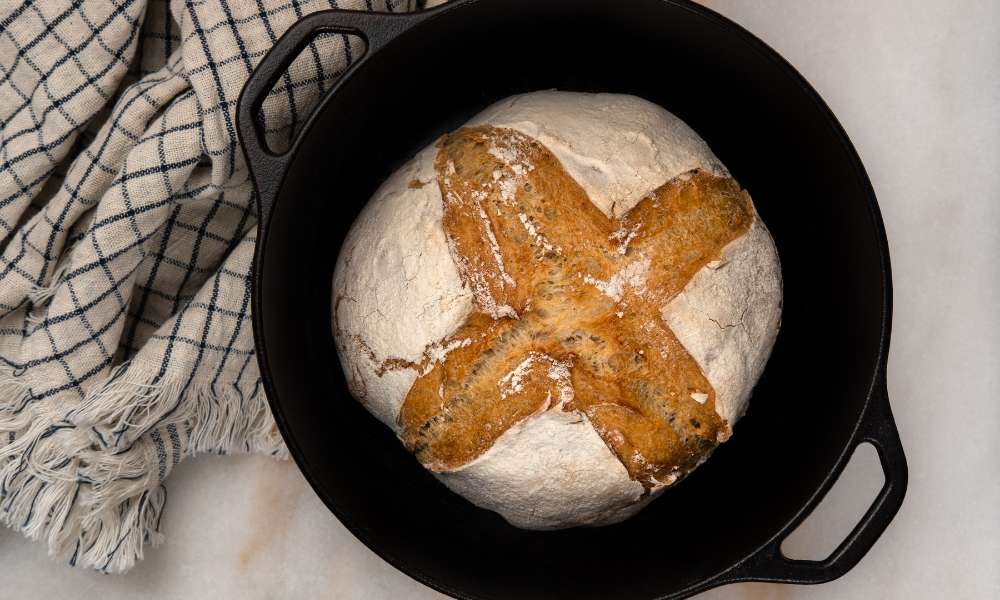Embarking on the delightful journey of bread-making doesn’t require specialized equipment like a Dutch oven. In this guide, “How to Bake Bread Without a Dutch Oven,” we explore innovative and accessible methods that will help you achieve that perfect crust and soft interior. Whether you’re working with limited kitchen tools or simply seeking new techniques, this article provides step-by-step instructions and practical alternatives to traditional bread baking. From choosing the right baking materials to mastering the art of steam, get ready to transform simple ingredients into a delicious loaf that rises beautifully, no Dutch oven needed. Join us as we unlock the secrets to perfecting homemade bread in your everyday oven.
Essential Tools for Baking Bread Without a Dutch Oven
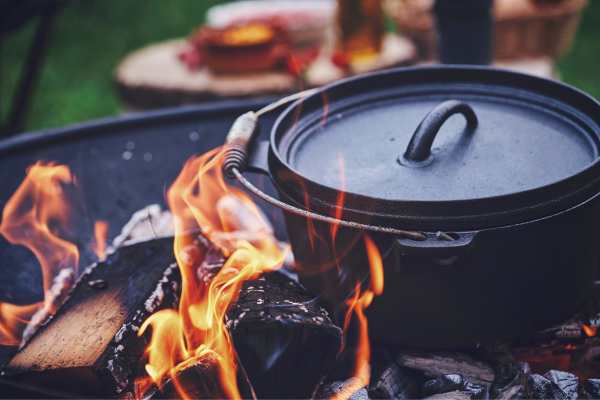
Baking bread without a Dutch oven is surprisingly simple with the right tools. A sturdy baking sheet or pizza stone serves as an excellent base, providing the necessary heat distribution for an evenly baked loaf. Additionally, a high-quality oven thermometer ensures your oven reaches the ideal temperature crucial for bread baking. Don’t forget a sharp knife or a lame for scoring dough, which helps control the expansion of the bread as it bakes. Finally, consider using a heavy pot or cast iron skillet to create steam, mimicking the humid environment a Dutch oven naturally provides, essential for achieving a golden, crispy crust. With these tools, your bread baking will be both successful and satisfying.
Preparing Your Dough: Key Ingredients and Mixing Techniques
Creating the perfect bread dough begins with understanding the essential ingredients and mastering the right mixing techniques. Start with high-quality flour, fresh yeast, and purified water for optimal results. For a richer flavor, consider adding a pinch of salt and a touch of sugar, which can also help in yeast activation. The key is to mix these ingredients gradually and knead the dough thoroughly until it’s smooth and elastic. This process enhances gluten formation, crucial for the bread’s texture. Additionally, maintaining the correct temperature during mixing can significantly affect the dough’s rise and the final bread’s texture. These fundamental steps set the foundation for a successful bake without a Dutch oven.
Shaping Your Dough for Optimal Rise and Texture
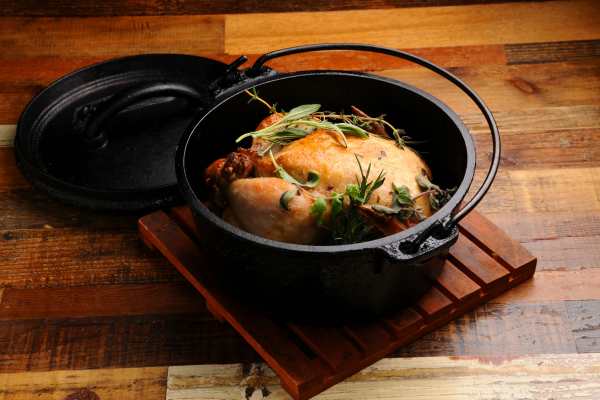
Achieving the perfect rise and texture in your bread begins with properly shaping your dough. This critical step ensures even baking and the desired airy structure. Start by gently flattening the dough to release any large air bubbles, then fold and shape into a tight ball to create tension on the surface. This process helps in forming a dough that expands upwards rather than spreading out, resulting in a well-risen loaf. Letting the shaped dough rest in a warm, draft-free area encourages a final rise before baking, setting the stage for optimal texture and a beautifully rounded top. Follow these tips to master the art of dough shaping for exceptional homemade bread.
Creating Steam in Your Oven for the Perfect Crust
Achieving the perfect crust on your homemade bread involves mimicking the steamy environment of a professional bakery. An easy method is to place a shallow metal pan on the bottom oven rack and fill it with hot water just as you start baking. The evaporating water will create ample steam, softening the dough’s surface and allowing it to expand fully before setting into a crispy crust. This technique ensures your bread emerges with a glossy, artisan-quality crust, rivaling those baked in a Dutch oven. Remember, the key is adding water carefully to avoid steam burns and ensuring your oven is preheated for the best results.
Alternative Baking Containers to Dutch Ovens
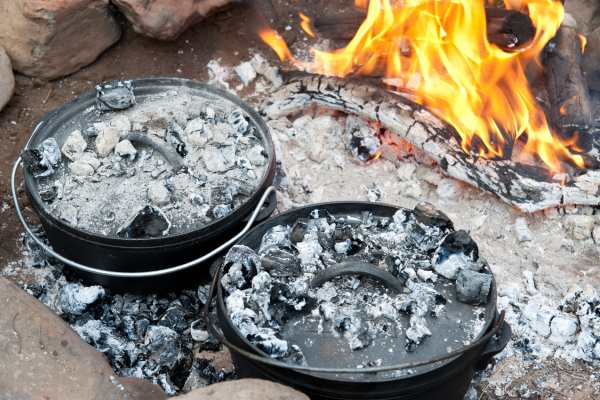
Exploring alternative baking containers can be a game-changer for home bakers. A heavy cast iron skillet, for instance, closely mimics the heat distribution of a Dutch oven, making it an excellent choice. Similarly, a pizza stone offers the intense bottom heat needed for a crisp crust, while an oven-safe pot coupled with a tight-fitting lid can suffice for those seeking a moist, tender loaf. Even a simple baking sheet, when used with a water pan placed on a lower rack to create steam, can yield delightful results. Each of these options provides a unique way to achieve bakery-quality bread at home, opening up endless possibilities for those without a Dutch oven.
Step-by-Step Guide to Baking Bread on a Baking Stone or Steel
Baking bread on a stone or steel provides an excellent alternative to using a Dutch oven, closely mimicking the effects of professional ovens. Start by preheating your oven with the baking stone or steel inside to ensure it reaches the optimal temperature. Carefully place your shaped dough directly onto the preheated surface, adding a tray of water at the bottom of the oven to create steam. This setup encourages a crispy crust while maintaining a moist interior. The key is maintaining consistent heat, so avoid opening the oven frequently. By following these steps, you can achieve a beautifully baked loaf with a golden, crunchy exterior and a fluffy inside.
Tips for Using a Cast Iron Skillet as a Bread Baker
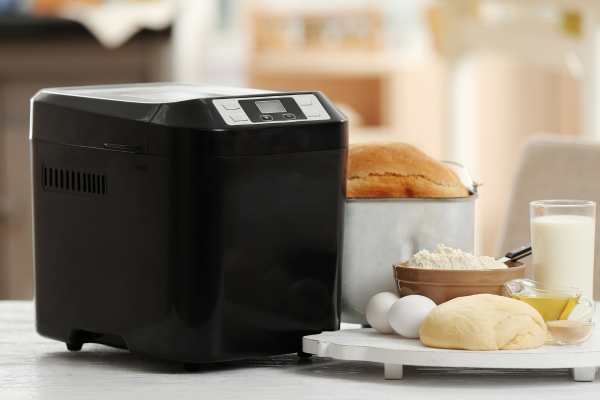
Utilizing a cast iron skillet can be a fantastic alternative for those who wish to bake bread without a Dutch oven. The heavy, even-heating nature of cast iron makes it ideal for achieving a golden, crispy crust and moist interior. To ensure success, preheat your skillet in the oven as it warms. This mimics the preheating process of a Dutch oven, creating an optimal environment for the dough to rise and crust beautifully. When placing the dough into the hot skillet, be cautious to avoid burns. Additionally, adding a few ice cubes to a separate tray beneath during baking will generate enough steam to perfect the bread’s texture.
How to Achieve the Ideal Oven Temperature and Baking Time
Achieving the ideal oven temperature and baking time is crucial for perfecting bread without a Dutch oven. Begin by preheating your oven to a higher temperature, around 450°F (232°C), before placing your dough inside. This initial heat helps in creating a crisp crust. For most bread types, reducing the temperature by about 20 degrees after the first 15 minutes and continuing to bake ensures even cooking and a golden finish. Use an oven thermometer to monitor the temperature accurately, as home ovens often vary. The total baking time depends on the bread size, but a standard loaf usually takes approximately 25 to 30 minutes. Always check for a hollow sound when tapped, indicating it’s fully baked.
Common Mistakes to Avoid When Baking Bread Without a Dutch Oven
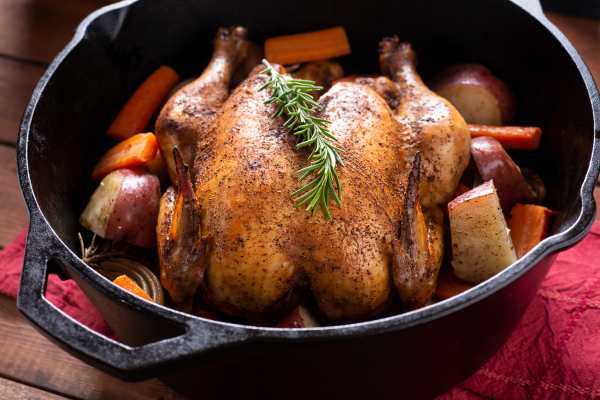
When Bake Bread Without a Dutch Oven, several common pitfalls can affect the quality of your loaf. Overproofing the dough can lead to a dense, flat bread, so be vigilant about timing during the rise. Additionally, neglecting oven temperature can result in undercooked centers or overly dark crusts. Many bakers forget the crucial step of creating steam, which is essential for a shiny, crackled crust. Using the wrong substitutes, like containers that can’t handle high heat, may also disrupt the baking process. By avoiding these mistakes, you can ensure a beautifully baked loaf that rivals those made in a Dutch oven.
Storing and Preserving the Freshness of Homemade Bread
Once your bread is beautifully baked, proper storage is key to maintaining its freshness. Cool the loaf completely before wrapping it in a clean, dry cloth, which allows the bread to breathe and maintain a desirable crust texture. For longer storage, slice the bread once fully cooled and freeze in airtight bags, ensuring minimal exposure to air. This method keeps the bread fresh for weeks and is perfect for those who bake in bulk. Remember, the location also plays a role; keep your bread in a cool, dry place to prevent mold and preserve its quality for as long as possible.
Conclusion
Mastering the art of Bake Bread Without a Dutch Oven opens up a world of culinary possibilities. By utilizing alternatives like baking stones, cast iron skillets, or even simple baking trays, you can still achieve that perfect, crusty loaf. The techniques discussed here ensure that anyone, regardless of their kitchen tools, can indulge in the pleasure of fresh, homemade bread. So, embrace these methods and let your oven work its magic. With practice, you’ll refine your skills and impress with the delightful aromas and textures of freshly baked bread, proving that you don’t need a Dutch oven to create bakery-quality results at home.

